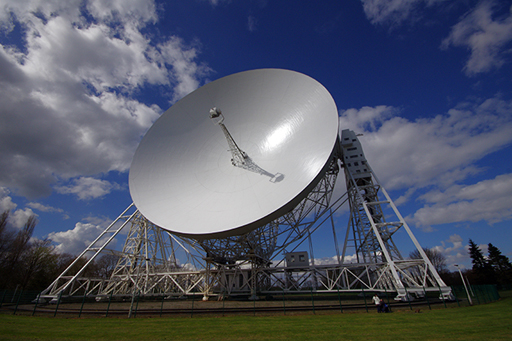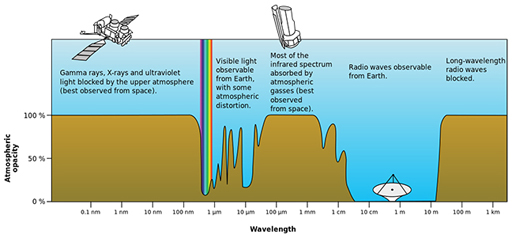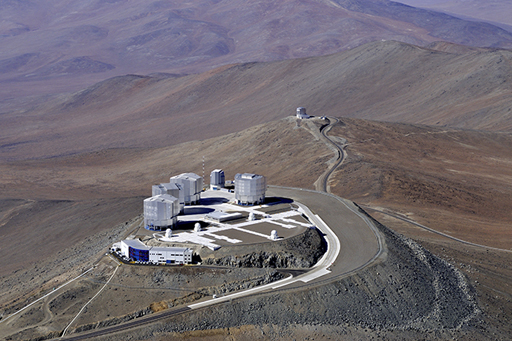3.3.2 Observing the stars
The most common tool used for astronomical observations is a telescope, which is simply a piece of equipment that collects radiation and focuses it on to a detector.
The most well-known telescope in the UK is the Lovell Telescope at Jodrell Bank (shown in Figure 16), with its 76.2 m dish. The dish collects radio waves.
Radiation from stars and galaxies hit the Earth’s surface after travelling through the Earth’s atmosphere. At some wavelengths (e.g. radio), the Earth’s atmosphere is not a problem: the radiation travels through without modification.
At other wavelengths, however, the atmosphere interferes. Just think what it’s like when you are outside on a sunny day and a cloud passes across the surface of the sun. It grows a bit darker and the temperature drops. When the sun ‘comes out’ from behind the cloud, it immediately feels warmer and lighter. This is an example of optical and infrared radiation from the sun being absorbed by the Earth’s atmosphere.
The diagram in Figure 17 is a schematic illustration of how much radiation at different wavelengths is absorbed by the Earth’s atmosphere at sea-level. Very little visible radiation is absorbed, although there may be atmospheric distortion – the effect that causes stars to appear to ‘twinkle’. Almost all radiation with shorter wavelengths is blocked by the atmosphere. This is a good thing for us – otherwise we would be fried by the X-rays coming from the Sun!
There is also almost no interference from the atmosphere for radiation with wavelengths of around 1 m – the radio part of the spectrum. This is why radio telescopes can be located almost anywhere on the Earth’s surface. The Lovell Telescope is at Jodrell Bank, just outside Manchester, UK, and the Arrow Telescope is at the Open University in Milton Keynes, UK. Neither location is particularly noted for its atmosphere!
Between the visible and the radio, there is a very variable absorption pattern, with some narrow ‘windows’ where radiation can get through, although most infrared, sub-millimetre and millimetre radiation is blocked.
The thinner and drier the atmosphere, the better the ‘seeing’ is for a telescope that is collecting optical and infrared radiation. Therefore, many telescopes that operate at these wavelengths are positioned on mountain tops.
The Very Large Telescope (VLT) of the European Southern Observatory (pictured) is sited at Paranal in Chile, at an altitude of over 2600m, one of the world’s driest environments.



